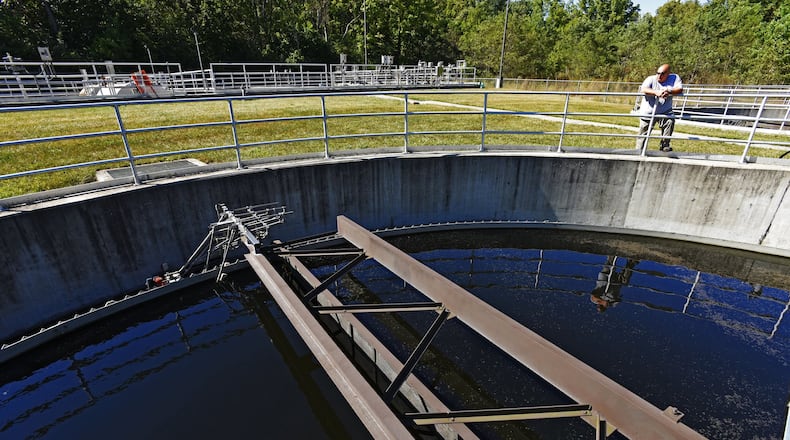NEW SEWER LINE COST
St. Clair Twp. residents in the Williamsdale subdivision must pay to hook up to a proposed new sanitary sewer.
The new sewer line that would serve 228 properties would cost each residence more than $6,000.
Here is a breakdown of the costs for each residence:
$3,720 for their portion of the $2.8 million project
$2,145 in sewer tap-on fees
$75 for permits
$1,500 to $2,000 for a plumber to disengage septic systems at the residence
Source: Butler County
HELP WITH SEWER COSTS
Homeowners in the Williamsdale subdivision can get more information about the sewer project and agencies available to help with costs by calling Bob Leventry at 513-887-5616.
Butler County commissioners are waiving thousands of dollars in fees to help residents of a St. Clair Twp. subdivision hook up to a new sanitary sewer that many say they cannot afford.
A couple dozen residents of the Williamsdale subdivision crowded the commission chamber Monday morning, armed with questions and concerns about the new sewer line that would cost each residence more than $6,000.
Among the price tag is the county sewer tap-on fees.
Commissioners on Monday decided to allow the 228 residences to pay half the usual tap-on fee of $4,635 if people tap on within one year — double the time originally presented — of the new system’s start-up.
Each homeowner must put 20 percent down and pay the rest through property taxes over five years, with 5 percent interest. The costs can also be paid in one lump sum up front.
Each residence will also be assessed $3,720 for their portion of the $2.8 million project.
The homeowners can pay the assessment through their property taxes over a 40-year period, with 2.75 percent interest, which will cost them about $154 annually. The assessment will be paid by all property owners regardless of whether they actually tap into the new system.
While the health department hasn’t ordered the sewer line, it is necessary, according to Water & Sewer Department Director Bob Leventry.
“Most of the home sewage disposal systems and septic tanks in that area are substandard and don’t meet current requirements,” Leventry said, adding they pose a threat to the nearby New Miami aquifer and the lots aren’t big enough to fit right-sized septic systems.
“This is a great opportunity for the residents to heavily grant subsidized sanitary sewer service, which should help them in the future with property values,” he said.
Donald Berry, a resident in the subdivision said the sewer charges aren’t the only issue.
“I know a lot of people up there are really hurting for sewers, but the biggest problem we’ve got is not the sewers — it’s the tax they are charging the people for the flood insurance,” Berry said. “They can’t afford it so we’ve had a lot of people lose their homes.”
The Federal Emergency Management Agency (FEMA) designated some properties in the area as flood areas, forcing people to buy insurance, St. Clair Twp. Trustee Gary Couch told the Journal-News several years ago.
Couch said flood insurance costs homeowners about $1,000 a year. For those who don’t buy it, mortgage companies often purchase it and then charge the residents back, or foreclose on the homeowners that don’t pay.
A re-survey of the area showed some properties were erroneously place in the flood plain, but FEMA, according to Couch, has done nothing to rectify the situation.
Commissioner Don Dixon said the county will do what it can to help.
“We can try to help with that, but they (FEMA) pay about as much attention to us and they did to you,” he said. “We’ll continue to work on that … we can contact John Boehner and see if we can’t get some help.”
One man who identified himself as an “investor” in the area said he knows people who plan to abandon their homes because of the impending sewer project.
Dixon asked the residents not to panic.
“If you know of any of your neighbors that are talking about walking away from their homes because of this, have them call Mr. Leventry and we will hook them up with the agencies and help them get the sewer hooked up to their house and they’ll still be able to stay there,” he said.
The lion’s share, $1.2 million, of the project’s funding is coming from the federal government and the county has also obtained monies from the Ohio Public Works Commission, the county water and sewer fund and $200,000 worth of Community Development Block Grant funds.
About the Author
